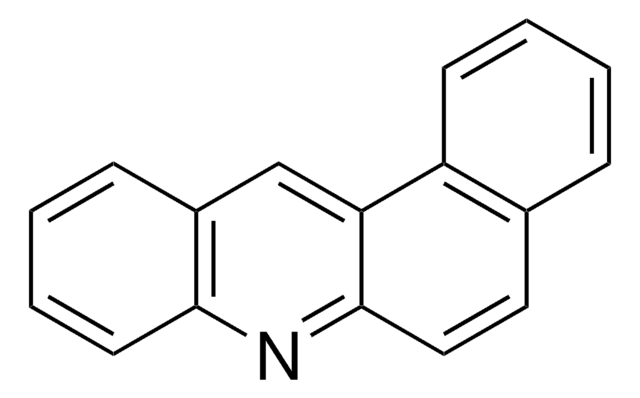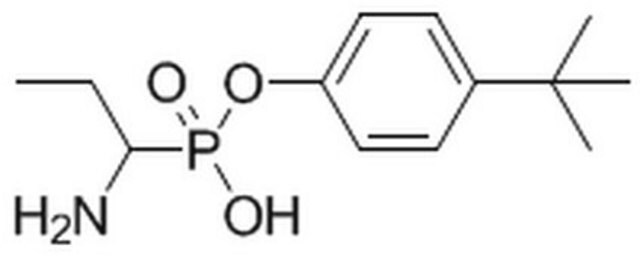BCR156R
Dibenz[c,h]acridin
BCR®, certified reference material
About This Item
Empfohlene Produkte
Qualität
certified reference material
Agentur
BCR®
Hersteller/Markenname
JRC
Methode(n)
HPLC: suitable
gas chromatography (GC): suitable
Format
neat
Lagertemp.
2-8°C
SMILES String
c1ccc2c(c1)ccc3cc4ccc5ccccc5c4nc23
InChI
1S/C21H13N/c1-3-7-18-14(5-1)9-11-16-13-17-12-10-15-6-2-4-8-19(15)21(17)22-20(16)18/h1-13H
InChIKey
BTVBCAKHMZHLFR-UHFFFAOYSA-N
Hinweis zur Analyse
BCR156R
Rechtliche Hinweise
Signalwort
Warning
H-Sätze
P-Sätze
Gefahreneinstufungen
Carc. 2
Lagerklassenschlüssel
11 - Combustible Solids
WGK
WGK 3
Flammpunkt (°F)
Not applicable
Flammpunkt (°C)
Not applicable
Choose from one of the most recent versions:
Analysenzertifikate (COA)
Sorry, we don't have COAs for this product available online at this time.
If you need assistance, please contact Kundensupport
Besitzen Sie dieses Produkt bereits?
In der Dokumentenbibliothek finden Sie die Dokumentation zu den Produkten, die Sie kürzlich erworben haben.
Kunden haben sich ebenfalls angesehen
Unser Team von Wissenschaftlern verfügt über Erfahrung in allen Forschungsbereichen einschließlich Life Science, Materialwissenschaften, chemischer Synthese, Chromatographie, Analytik und vielen mehr..
Setzen Sie sich mit dem technischen Dienst in Verbindung.
![Dibenz[a,h]acridin BCR®, certified reference material](/deepweb/assets/sigmaaldrich/product/structures/383/751/70b25872-405f-49b1-b76b-ed5e018ce265/640/70b25872-405f-49b1-b76b-ed5e018ce265.png)
![Dibenz[a,c]acridin BCR®, certified reference material](/deepweb/assets/sigmaaldrich/product/structures/409/012/e2e7efd7-cd34-4a89-b5b5-bf5a65110e69/640/e2e7efd7-cd34-4a89-b5b5-bf5a65110e69.png)


![Dibenz[a,i]acridin BCR®, certified reference material](/deepweb/assets/sigmaaldrich/product/structures/531/045/5d4c722d-9928-44fb-8bbb-7f4e27442f63/640/5d4c722d-9928-44fb-8bbb-7f4e27442f63.png)




![Benzo[h]chinolin 97%](/deepweb/assets/sigmaaldrich/product/structures/344/715/928932d2-4ca4-4402-b56c-85a80100ce17/640/928932d2-4ca4-4402-b56c-85a80100ce17.png)